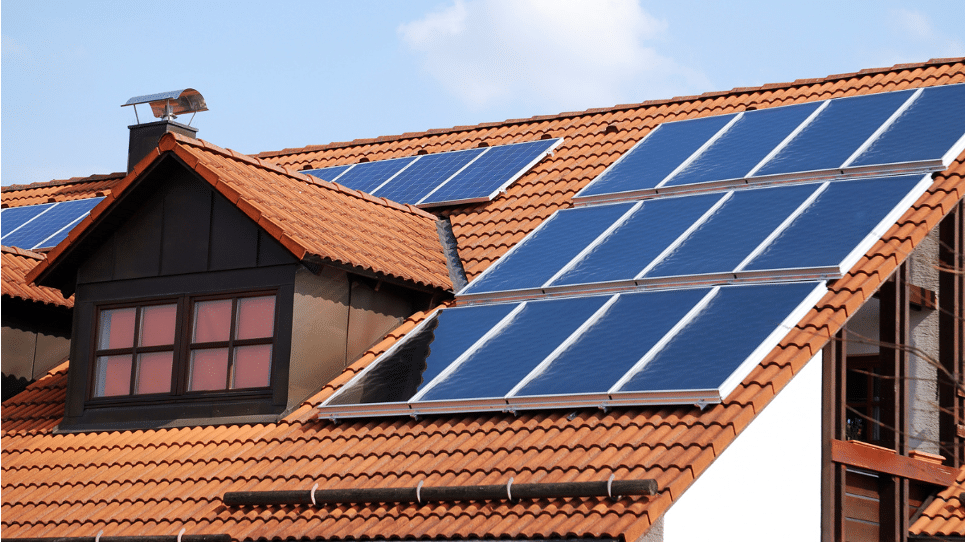The price of SolarEdge (NASDAQ: SEDG) dropped 27% in one day last week. That of Enphase (NASDAQ: ENPH) followed within minutes by falling 15%. The two companies are not directly related, they’re not – at least not particularly – supplier and customer, or partners. They are in the same sector though. Which is the thing we should pick up from this event.

The specific cause was a sales up date – and warning – from SolarEdge. European sales are proving hard to close. This also then means that the distribution chain for the company’s products is full. So, it’s not just that the end sales are slow, it’s that the channel is stuffed. So, there will be fewer sales as that distribution chain unstocks down to the correct amount for this new and lower level of business.
Is this all about a recession?
This is actually the same thing that happens in every recession – it’s the changes in stock level in the distribution chains that leverage up and exaggerate the changes in actual final demand.
This is not though – at least we don’t think it is – evidence of a general and widespread economic slowdown. The damage was restricted to others, like Enphase, in this same market sector – domestic and residential solar panel systems.
Which then brings two further trains of thought. The first is, well, is this something specific to solar? Has there been some change in the merits of the technology or something? To which the answer is no. OK, the second question then becomes has there been some other change? The answer there is yes – interest rates have gone up.
No, this is financing costs – interest rates
Once we’ve identified that base problem – financing costs – it’s then both possible and necessary to expand that lesson out across other companies and sectors.
None of us are surprised that house prices start to fall when mortgage costs go up. Near everyone does measure the real cost of housing not at the ticker price for the building but at the monthly cost of being able to live in it. Interest rates go up, we would pay more in monthly interest, so we’ll buy cheaper houses. That removes demand from the system, house prices come down. That’s not a difficult chain of logic.
But the point about solar panel systems is that the same is true. Sure, they require no supplies or fuels once they’re up – but that is replaced by the capital cost of getting a solar panel system built and installed. Few of us have the spare cash to buy one outright so we finance that capital cost – interest rates go up, so does the solar power system. Therefore people buy fewer of them – the very thing we can see in the SolarEdge report.

So, who else suffers from rising interest rates?
But this is then generalisable. Anything that has that same fiscal structure – high upfront costs, low to no running costs but an associated financing bill – will react the same way to rising interest rates.
This will be true of new car sales – more especially EVs, where the initial cost is higher with those lower fuel costs. This will be true of both nuclear power and renewables – both have very high initial capital costs and very low to no fuel costs. Financing costs are therefore a major part of the total system cost. And we’ve already pointed out it’s true for houses.
Another way to put this is that a change in the price of money – which is what an interest rate change is – is a change in the relative prices of everything else. For all those other things have some different blend in their own cost structures between time, money and ongoing costs. That then means – because this is what a change in relative prices means – a change in relative purchase and production decisions on near everything.
Perhaps we’d better work on finding out?
Which means we’ve an investment decision task here. We need to work through those things which have high and low capital costs. The sales of, and so prices of, the former will fall relative to the second. If we can work out which those are ahead of everyone else and get ourselves positioned for that then we should be able to benefit.
It’s possible that this will hit more of the solar sector than just SolarEdge and Enphase. Well, actually, it’s pretty certain it will so perhaps we should look for those whose prices haven’t fallen already. But it will extend right across the renewables sector. As it is housing and might well do other financed purchases like cars.
It’s been near two decades now since society and the economy went through an appreciable change in interest rates. So the reaction is slow and there might well be opportunities out there.